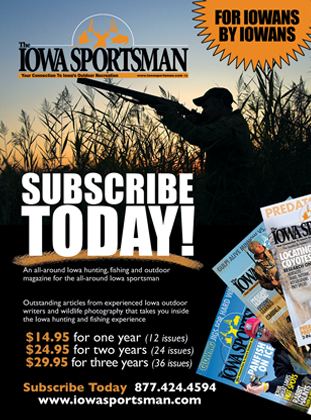Aging a Whitetail on the Move

Aging a whitetail
Sitting in my tree stand on a cold and crisp fall morning, I can hardly contain the anticipation of seeing the first deer of the breaking day. My eyes and ears are at the ready as I eagerly scan the woods around me for the flicker of that white tail or the casual movement of the faded brown hide of a deer.
Once I’ve spotted my quarry, the next thing that I desire to know is its age. Aging deer on the hoof is a practiced task that you have to know a little about if you desire to harvest mature deer on the property that you hunt. Why hunt the mature deer you ask? The advantages are many, but just to name a few; more meat, better genetics, and a healthier herd in all. If you care about any of those things, learning to age a deer must be a vital part of your hunt. Harvesting mature does and bucks will also show you long-term benefits down the road.
One of the best and most reliable ways to age a deer is to look at its teeth. However, when hunting, that is not an option for obvious reasons. So, the next best thing is to look at the body and study a few key parts of a deer that will give you a good idea of how mature it is.
Antler Size
If you are looking to harvest a buck this year with a bow or a gun, pause and take a second to look at his antlers first. Antlers aren’t always as accurate as teeth, but if you know a thing or two about how they grow, you can pretty accurately figure out how old the buck is.
First off, 6-month-old bucks will ONLY have small buttons or slight spikes sitting upon the top of their heads. Commonly known as “button bucks”, they are often mistaken as does at this age. Iowa does count yearling bucks as “antlerless” and they can be harvested as such during the deer seasons. However, if you want these bucks to grow into their full potential, you need to take a second look to see if he is carrying those two small nubs that are barely exposed under the hair between his ears. If they are there, let him walk.
1 ½-year-old bucks will often carry what is called a “basket rack” set of antlers. At this age, the bucks will usually have four to eight points total showing on their antlers. However, the spread of the antlers will be within the tips of their ears. If you see a buck like this, he still has a few years to go to reach breeding maturity.
2 ½-year-old bucks will, usually take on the number of points that they genetically continue to grow the rest of their lives. Maybe eight, ten, or twelve points will be the regular formation of their antlers. Most of the time, taking on the same general shape each year as well! These antlers are still typically within the ears and compared to the body, small in size.
3 ½-year-old bucks are on the beginning side of being considered “mature” in the hunt and harvest category. Some hunters will use the 3 ½-year-old mark as a minimum age for harvest. These bucks, again, will have the same general shape that they did as a 2 ½-year-old. Often, as mentioned before, carrying the same number of tines. Occasionally sporting a few extras off its main design. Deer at this age will have longer tines and will begin to measure outside their ears. However, the antlers will not have the girth that older bucks will carry. Long and thin is the measure of most 3 ½-year-olds.
4 ½-year-old bucks will be considered mature in their category and will typically enter into the age of achieving the most breeding. These bucks will carry all that you’d want in a set of antlers. At 4 ½ you will see mass being a big part of the antler. At this age, the antlers will have points, length, and mass. Past this age, the antlers will gain girth for a few more years and possibly add “character” in the form of kickers and splits. If you are trying your best to manage a herd, my suggestion is that deer 4 ½ years old be your minimum age of harvest. Plus, they look great on your wall!
Body Size
6-month-old deer are easy to spot if you take a second to look at the shape of their body. For obvious reasons, these deer will be the smallest in the timber. At only six months of age by the time hunting seasons open, yearling bucks and does have only been alive for the summer season. They are still learning and it’s important to let them!
Yearling deer will often times still be with their mothers. A yearling will stay with their mothers for up to a couple years sometimes. Yearling bucks, however, will be pushed away through the winter and will join up with bachelor groups after the breeding season is done.
Everything about them is short! The length of their nose/face, the length of their neck, the height of their back and the end-to-end measure of their body. The men in my family have nicknamed these young deer “short-neckers” hinting at the difference between their necks and the necks of more mature deer. Again, for the health of the heard, it would be my advice to let these guys grow up!
At 1 ½ years, deer will grow a little taller and those “short” features will begin to mature. A doe at this age is mature enough to be bred, but not always ready for it. As I said, both will be generally bigger, but certain features will be “thin” when compared to others that are more mature.
The deer at this age will often have a long and thin neck. Bucks will gain a little mass during the rut, but not much. From the side, their bodies won’t quite have that “barrel” look to them through their core either. If you were to compare their front legs to their back, it would appear that their rump, or the height of their rear legs are taller than their front. Almost like they are tipping forward.
For does, at 2 ½, their bodies will begin to reach a status of maturity. Again, they are able to be breed and their bodies are able to handle it. Does at this age will reach their mature height as well as begin to take on that barrel chested appearance. You will notice that the length of their nose will be longer and thicker too.
For bucks at this age, their bodies will do much the same. The only difference will be their antlers. The antlers will still signal the immaturity of their age. Again, bucks will have some girth in their necks during the breeding season, but during the rest of the year, their size will match the does of the same age.
At 3 ½, does will just continue to mature most noticeably in the face and chest area. Just as the buck’s bodies will do at this age, the front of the chest will look more like a developed brisket of a cow. There will be a little more meat there for the eye to see if you’re looking for it. You will also notice that the line of the back from the front shoulders to the back hips will be more level rather than higher on the rear end. The deer’s belly will begin to have a bit of a sag at this age as well as their back too.
Behavior
When you see mature deer in the woods, there is a definite difference in their behavior. It really does not give you an ability to tell exactly how old they are, however. It will tell you that their senses are mature and that they have lived long enough to know about the things they need to be watching for.
Mature bucks, especially during the rut, will often times be on their own. Dominate bucks in the timber will chase out all the younger bucks that might give them competition to breeding does. They are typically solitary at this time of the season and will rarely be seen traveling with other bucks.
These bucks are VERY wary too! They are oftentimes the last to enter a field in the evening. Watching all the other deer filter into the field to verify that all is safe to enter. You can bet, he’s an older buck if he’s one of the last ones to arrive.
When does are together, which they often are, the mature does will be the watchdogs of the group! Their senses are always aware of what’s happening around the group while the does that are younger continue to graze as if there is nothing to worry about.
A mature doe pays attention to every little sound, movement of the wind, and any other reason that might be cause for concern. She is often the first to blow the warning when there is something that isn’t right. She is oftentimes the most protective deer of the group.
Conclusion
Learning how to age a deer on the hoof is a great tool to learn. As I mentioned in the beginning of this article, you can also age a deer by their molars, but I’ve never had them stop and open their mouths wide enough to assess their age that way!
I would encourage you to take some time and study up on the characteristics of the ages. Maybe take an evening drive in the country and do your best to age the deer that you see in the fields!
Knowing what is immature and allowing it to grow to maturity will benefit your hunting experience in many ways. Not only are you putting more pounds of meat in the freezer, you will be allowing a herd to pass on the genetics to continue its health.
Aging a doe or buck can be a fun guessing game. It’s become a fun little game with my family. Give it a try and good luck with your season!
by Tom Peplinski
November 2021

